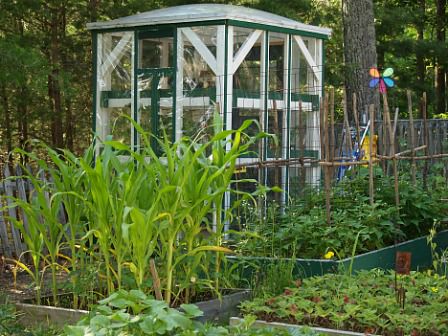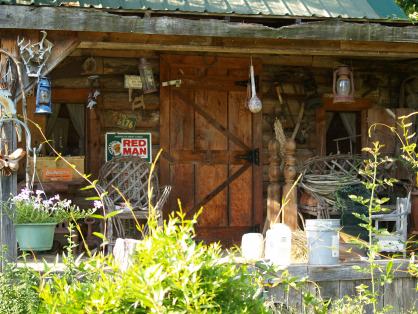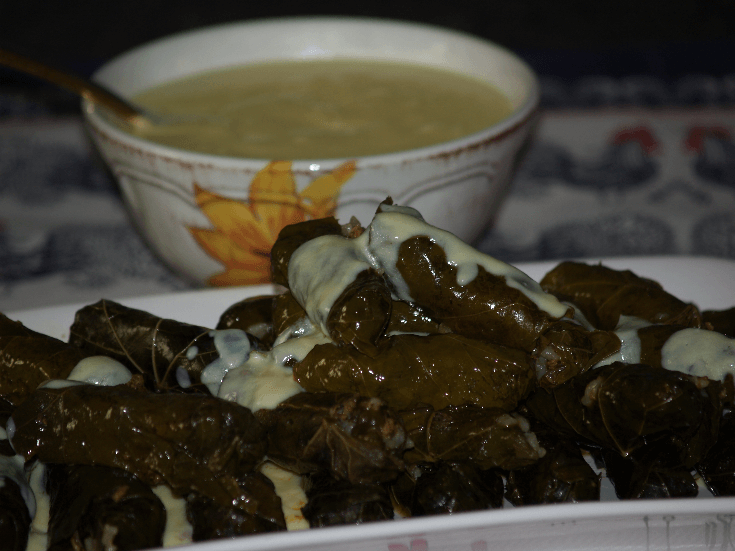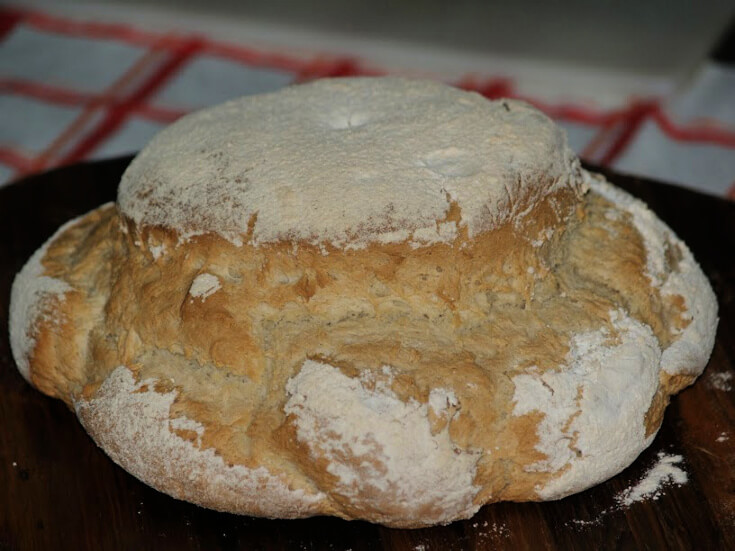- Painless Cooking
- Vegetables
- Gardens
Starting a Garden and Harvesting the Veggies
Starting a garden seems to be a top priority for many people in the spring of each year. I believe more people than ever are learning how to plant a garden. The tastiest vegetables come from the home garden. Much enjoyment comes from producing your own fresh vegetables. This is an activity in which the whole family can participate. For me it was always exciting to see those first sprouts from the seeds in the soil. If you have children it is even more exciting for them to see the plants growing.
Starting a garden was Dad’s priority each spring of the year. It had to be to feed all of us! The thing I did not realize as a child was how hard he and sometimes the “boys” worked at it. Our land, back then, was very fertile caused by occasionally flooding. Dad kept the vegetables free of weeds which took a lot of work to accomplish. Between the rows the soil was almost coal black. His garden was so pretty that the town’s people would walk out past our place just to see his garden.
After I had children, I was so excited about starting a garden of my own. This is when I realized the effort it took. Even though I loved raising my own garden, it is still work. Although I had basic knowledge through my dad, I learned that you can work hard but still lose money gardening, especially when you are new at it. The one thing I learned immediately was that my soil was not like Dad’s. My first garden was mostly clay and that is not good.
STARTING A GARDEN
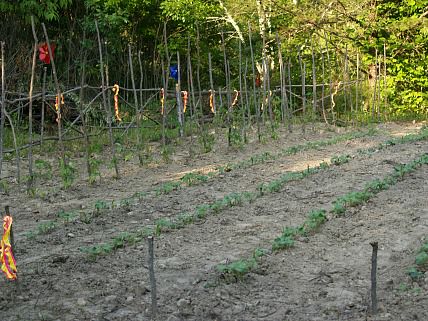 My Neighbor's Garden Starting to Grow
My Neighbor's Garden Starting to GrowIf you are a “newby” when it comes to starting a garden, the best suggestion that I can offer is to buy a good book. There are many great ones for sale and you can also get a lot of advice on the internet. I like books because you can make your own notes in the book. Most books will tell you what vegetables grow best in your area and what is the best date for planting them as well as many other tips. When you look for advice on growing your garden, make sure you research the information for your area. Here in the States, we are divided off by growing season zones like Zone 8, Zone 9, etc.
Actually, winter time, when it is too cold to do anything else, is a great time to research and make out your garden plan. Most of the fruit and vegetable catalogues come out in the winter so you can review all the products. When starting a garden, there are so many questions you need to ask yourself and you must arrive at ANSWERS before you start. This is when you need a book with lots of space for notes (or have a notebook ready).
QUESTIONS FOR STARTING A GARDEN
How big do you want it to be? How much land do you have to work with? How much food do you want to produce? Do you want vegetables for eating fresh or are you planning to preserve some for winter? What kind of vegetables do you want to grow? What is your growing zone? What kind of soil do you have? Are you planning to grow organically or will you use pesticides? How will you water the garden? How much time are you able to spend working in the garden?
If you are starting a garden, remember that the growing season of each vegetable is important to know. This is the length of time that your area has the conditions for a plant to reach maturity and produce a crop. This season is measured by the days from the last frost in the spring to the first frost in the fall. The word “hardiness” is used to indicate how well a plant can tolerate cold temperatures. Vegetables have different temperature tolerances and are usually classified as cool weather crops or warm weather crops.
Before starting a garden find a location which has a good source of sunlight. This is necessary to provide energy for the plants to turn water and carbon dioxide into the sugar they use for food. It is not as necessary for lettuce where you only eat the leaves; but if the plant provides a fruit to eat like tomatoes, they require much more sun. Insufficient light will prevent the plant from producing flowers which in turn produces the fruit.
Those who know how to plant a garden know that preparing garden soil is utmost important to produce a good harvest. Good garden soil is not easy to find. The soil must supply water, a good supply of nutrients, it must supply air to the roots and it must be firm enough to support the plants. After selecting your garden spot take a sample of the soil to be tested. The test results will tell you what needs to be added to make it suitable for growing vegetables.
If you have soil like clay or all sand, it might be more beneficial for you to use raised beds. This way you can bring in good soil to fill the beds which is easier than trying to improve your soil. It was impossible for me to improve my clay soil when I started gardening. I also spent years in Florida trying to turn sand into good growing soil.
Growing vegetables require a lot of water, especially on hot days. How are you going to deliver water to your garden? Do you have well water or public water? You will need to consider the extra expense if you are paying for your water. If the vegetables do not get water, they will die. In this case you lose all your invested money and time.
It is a good idea to draw a garden layout once you have decided which vegetables and how many you have decided to plant. This will save you time and keep things orderly as you plant. Jot down the date you will be planting each vegetable and make your drawing in that order. I suggest that you start with a small garden because it is a lot easier to care for. A well cared for small garden will produce more than a large neglected garden. I know!
Before starting a garden, some tools will be necessary to do the job; then there are other ones that are not necessary but maybe will make the work easier. A spade and shovel are both used for lifting the soil. A spading fork is used for heavy digging and is the best tool for breaking up soil. A hoe has a flat blade and is used for piling mounds, making rows, cultivating and cutting off weeds. The trowel is hand held and has a pointed blade used as a small shovel to set out plants. The garden rake has a long handle and is used for leveling and removing rocks or soil clumps.
You might also have need for a wheelbarrow to save time carrying things for a large garden. Sprayers and dusters come in handy for applying pesticides and you might want a hand spreader for dry fertilizers. A rototiller can have many uses in the garden from preparing for planting to cultivating between the rows. Remember also, that garden equipment requires maintenance work!
Some vegetables like tomatoes, cabbage, Brussels sprouts and peppers can be started before your last frost on the inside or in a greenhouse. Then they can be transplanted outside. Other vegetables can be planted in the soil directly with seeds. Find the dates for these in your area.
This is just a brief overview of what it takes when starting a garden. A good gardening book will give you more detailed information for your area. After I get my garden planted I just can’t wait to pick the first vegetables out of the ground; lettuces, green onions and radishes. Speaking of radishes; these radish plants yield some of my favorite springtime eating; both the root bulbs and the tops for greens. Unfortunately they are overlooked by many.
ADDITIONAL TIPS FOR STARTING A GARDEN
- Approximate weights of seeds to 1 ounce: 72,000 celery seeds; 23,000 carrots, 9,500 onions, cabbage, broccoli and Brussels sprouts 9,000; beets 1,600; beans 100-125; sweet corn 120-180.
- Six weeks before your last frost start indoors cabbage, Brussels sprouts, broccoli, cauliflower, head lettuce, celery, parsley and transplant 4 weeks later.
- Two weeks before your last frost you can directly in the soil spinach, peas, carrots, beets, onions, radishes, garlic and chard.
- Two weeks before last frost start indoors the tomatoes, bell peppers, eggplant and dill.
- On your last frost date potatoes.
- On your last frost date start indoors cantaloupe, honeydew, watermelon, cucumbers and sweet basil.
- Two to 4 weeks after the last frost date transplant all plants started indoors.
- Two to 4 weeks after last frost date plant seeds directly for early corn and pumpkins.
- After harvesting peas and carrots, replant with melons; replant lettuce with bush green beans.
WILTED LETTUCE RECIPE
Pick tender leaf lettuce and wash carefully. Drain on paper towels and pat dry. Break into pieces and pile into bowl. Slice spring onions over top. Sprinkle a little sugar over the top. Fry 3 to 4 slices of bacon until crisp and crumble over the lettuce mixture. Add 3 to 4 tablespoons of vinegar to the bacon drippings in the skillet. Pour very hot mixture over the lettuce and bacon mixture and toss; Serve immediately.
CUCUMBER RELISH RECIPE
I love homemade cucumber relish. It is so much better than what you buy.
- 4 Quarts coarsely ground cucumbers
- 2 Small bunches ground celery
- 2 Tablespoons mustard seed
- ¾ Teaspoon ground cloves
- 4 Cups sugar
- 2 Quarts ground onions
- 5 Tablespoons pickling salt
- ½ Tablespoon turmeric
- 4 Cups vinegar
Mix cucumbers, onions and celery. Add salt and let stand for 2 hours; drain. Mix spices with vinegar and sugar; stir well. Bring liquid to a boil and pour over the vegetables. Heat mixture until thoroughly heated and pour into sterilized jars and seal tightly.
VEGGIE DIP RECIPE
- ¾ Cup cottage cheese
- 1 Package ranch dressing mix
- 4 Ounces softened cream cheese
- ¾ Cup sour cream
- 3 Tablespoons water
Beat cottage cheese on high until smooth and creamy.
Add remaining ingredients; beat on medium until well blended.
Chill before serving; add a little more liquid if needed for dipping consistency.
